Google Pixel 6 Pro review: Excellent and (maybe) exclusive

Google has a flagship and it goes by the name Pixel 6 Pro. It features Google's custom processor, 120Hz curved screen, telephoto camera, and a memory and battery upgrade over the Google Pixel 6. Hardware and software work together here to offer the best experience with Google's Artificial Intelligence being in focus here, but is the price difference to the base model really justified?
Rating
Good
- 10-120Hz adaptive screen
- Super versatile camera
- Android 12
- Five years of security updates
- IP68 certified
- Price
Bad
- Battery charge time
- Limited storage availability by region
- A niche product
Google Pixel 6 Pro in a nutshell
The Google Pixel 6 Pro has a versatile and excellent camera system, a competitive display, and a processor that promises to deliver better performance for Artificial Intelligence (AI) and Machine Learning (ML) tasks. Google's flagship in 2021 is a complete package, but it is still a niche product.
Sold in select regions such as the United States and some European countries, the Pixel does not have the distribution capacity for devices like the iPhone and the Galaxy. In the past, Google faced problems with out-of-stock and, in 2021, with the shortage of parts in the market due to the Covid-19 pandemic, the scenario does not look optimistic.
Compared to Pixel 6, the Pro variant has a telephoto camera that works very well, a larger screen with curved sides and a 120 Hz refresh rate, more battery, RAM and internal storage options. The aluminum frame gives a more Premium impression to the Pixel 6 Pro as well. But that's it, in total, this difference adds $300 to the bill.
With all the fuss over the launch of Pixel 6 Pro, Google's flagship, the feeling is that the line may finally take off. However, this is still an unanswered question. Pixel phones are a niche, and Google has an important partnership with companies with which its flagship compete. In the end, this partnership will probably speak louder.
Original design and 120 Hz screen
The design of the Pixel 6 lineup revolves around the camera module bar. According to Google the most elegant solution was to add a telephoto lens for the Pro model. As a consequence, we have a device with unique design. Another striking visual feature is the size of the phone's screen.
What I liked:
- Original design.
- 120Hz screen refresh rate.
- Borderless display.
- Button positions.
What I didn't like:
- Slight overhang on curved sides at certain angles.
- Only one screen size option.

Looking at it from the front, the Google Pixel 6 Pro is pretty much just screen. The OLED display is 6.7 inches and the side edges are curved, which offers a good impression when consuming content. However, depending on the angle we move the device, a slight shadow can be perceived.
Even with a large screen and a considerable battery, the Pixel 6 Pro is a beautiful and elegant device, made of Gorilla Glass Victus glass and aluminum frame. Compared to the various flagships on the market, the Pixel 6 Pro feels premium, and reminds me a lot of the Samsung Galaxy S21 Ultra.
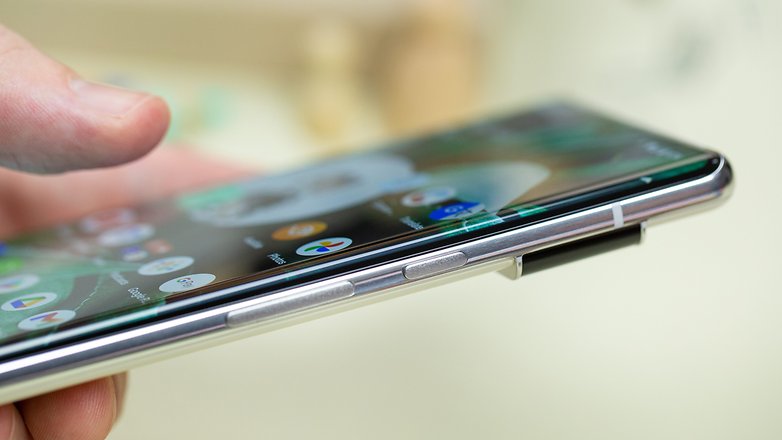
On the back, the bar camera module becomes a signature for the Pixel 6 series. Even with the significant elevation, at no point did my experience suffer from this format. The buttons are in the right position, even those with a small hand can reach them without difficulty.
Incidentally, using the new one-handed phone use option added to Android 12, it's very easy to navigate the system on a phone even with this screen diagonal. However, this is still a heavy phone, it weighs 210 grams and its measurements are also impressive: 163.9 x 75.9 x 8.9 mm.
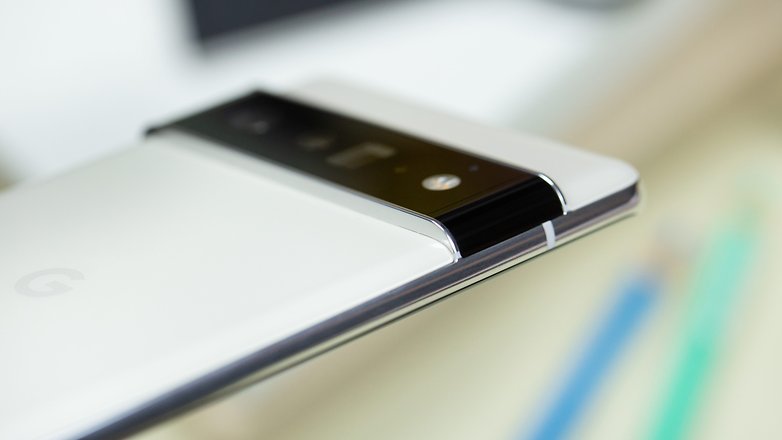
Finally, the 120 Hz display makes everything more fluid and smooth. The adaptive refresh rate automatically sets the device from 10 to 120 Hz depending on the content we consume on the screen. In addition, the biometric sensor positioned under the display allows you to unlock the device quickly and securely.
Flagship performance
Tensor is the first SoC developed exclusively by Google and the main goal of this processor is to handle Artificial Intelligence (AI) and Machine Learning (ML) software processes right on the device. In other words, image and language processing happens privately and locally, without cloud storage.
What I liked:
- Consistent performance.
- Android 12 and Material You.
- Five years of security updates.
- No hardware overheating.
What I didn't like:
- Limited storage variant availability.
For this, Google has created an Integrated System on Chip (SoC) with two Cortex-X1 cores, two Cortex-A76 cores and four Cortex-A55 cores in between for less power hungry tasks. The SoC works in conjunction with Mali G78 GPU and 12 GB of RAM.
Leaving the spec sheet aside, the Google Pixel 6 Pro demonstrated consistent performance, with no significant temperature rise or any kind of slowdowns. The processing time of the camera software is fast, as well as the use of multitasking features and the system's app responses.
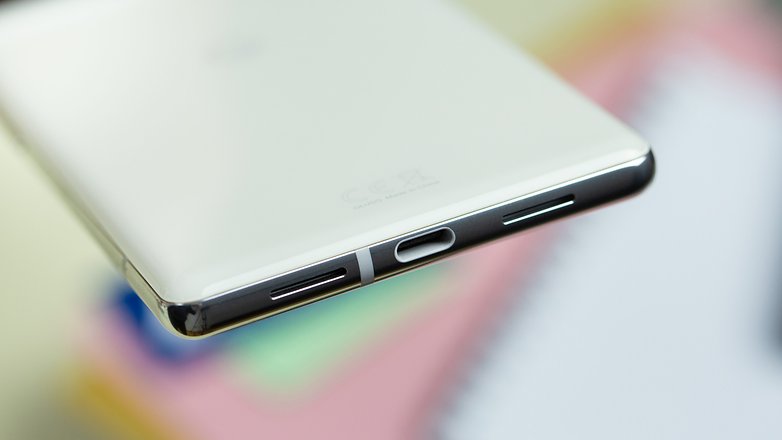
My criticism, however, goes to the limited storage variant availability in some regions. That's because the Pixel 6 Pro is a smartphone focused on image and language processing, with the camera as a major highlight. Without offering microSD card support, many people will be hostage to the cloud in the long run.
In the benchmark comparison table below, you can see that the Tensor SoC manages to achieve significantly better results than the Snapdragon 888 chips of the Xiaomi Mi 11 Ultra, but ends up almost in a tie with the Exynos 2100 of the Samsung Galaxy S21 Ultra, for example. Compared to the iPhone 13 Pro's A15 Bionic SoC processor, the Tensor lags behind when compared in the 3DMark benchmark database.
Google Pixel 6 Pro
| Model/Benchmark | Google Pixel 6 Pro | Samsung Galaxy S21 Ultra | Xiaomi Mi 11 Ultra | Apple iPhone 13 Pro |
|---|---|---|---|---|
| Geekbench 5 (single/multi) | 1.043/2.876 | 942/3.407 | 1.123/3.619 | - |
| 3DMark Wild Life | 6.446 | 5.375 | 5.621 | 9.665 |
| 3DMark Wild Life Stress Test | 6.367 | - | Overheating failure | 9.694 |
Android 12 and Material You integrated
The Google Pixel 6 Pro is the first smartphone to leave the factory running Android 12. In addition we have the insertion of device colors into the OS itself, making the hardware and software coexist in seamless harmony that we have never seen before.
The dynamic Material You theme lets you deeply customize system and app colors. So, from camera software to setting options, everything follows the same color palette.
In addition, the Privacy Dashboard features and usage indicators for the phone's features, such as microphone and camera, are on board the Pixel 6 Pro. Incidentally, regarding security, Google has stated that the sixth generation Pixel will receive up to five years of security updates, as well as three years of Android updates.
Versatile and fun camera set
Pixel devices are known for the excellent quality of the camera and the same goes with the Pixel 6 Pro. Here we have a set of three lenses, with the highlight being the 48 MP telephoto camera, capable of capturing images with 4x optical zoom. In addition, the Super Res Zoom feature delivers impressive results.
What I liked:
- Camera versatility.
- Accurate and vivid colors.
- Super Res Zoom impresses.
- Motion Mode is a great addition.
- Ultrawide front-facing camera.
What I didn't like:
- Magic eraser.
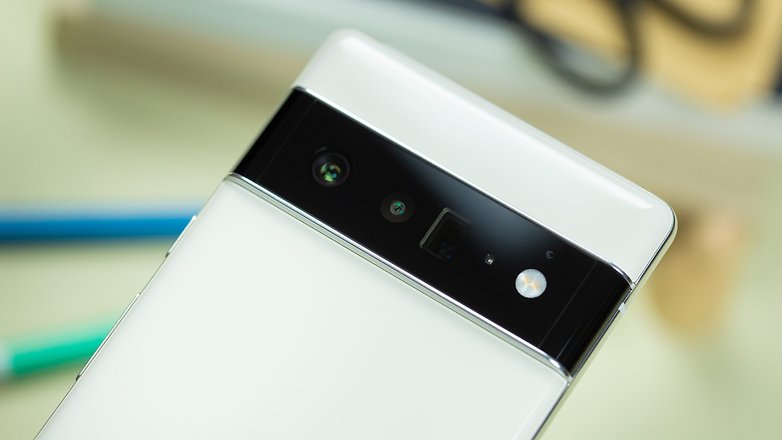
Like the Pixel 6, the Pro variant features a 50 MP main lens capable of capturing 12 MP images via the pixel binning technique. Google opted to use Samsung GN1's 1/1.31-inch sensor (with 1.2µm pixels), with f/1.85 aperture and optical stabilization (OIS).
The devices also share the 12MP ultra-wide-angle camera setup with f/2.2 aperture and 1.25µm pixel size, with 114-degree field of view. And the front camera uses an 11 MP sensor, with the option of image capture with ultra wide-angle field of view.
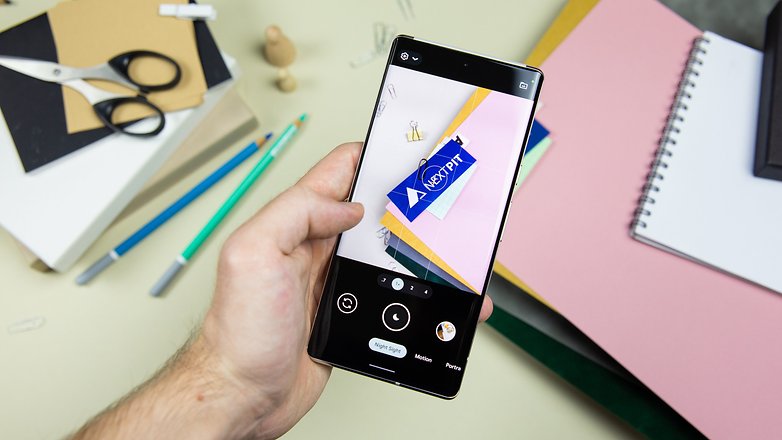
Overall, images captured with the Pixel 6 Pro have excellent colorimetry, and even with the focus on computational photography, the digital processing of the photos maintains the natural properties of the scenes. In other words, images captured in well-lit environments do not undergo an aggressive treatment. The Pixel 6 Pro's camera works very well the dynamic range, with respect to details and sharpness.
But what makes the Pixel 6 Pro the flagship of this series is the 48 MP telephoto camera, capable of capturing images with optical zoom of up to 4x and digital zoom of up to 20x. So, the versatility of the Pixel 6 Pro's camera is what marks an upgrade in the series.
Google's night mode has always been among my favorites when it comes to image processing in low-light environments. However, with the Pixel 6 Pro, it was possible to use the camera at night without even activating the feature, which I found really impressive in some cases, leaving the captured scene a bit more natural.
During my test, I used the automatic settings pretty much the entire time.
When it comes to the camera software, Google offers a clean layout and some new features, like the Motion Mode, for example, that makes using the camera more creative. Exposure, contrast and white balance adjustment controls are available right on the screen and are easy to set up, as well as switch between one lens and another.
The Magic Erase feature, however, is really hard to apply, because although the camera's Artificial Intelligence (AI) can perfectly understand the unwanted people or objects that need to be removed from the photo, the editing is not good. Check out the result below:
A comparison test of the Google Pixel 6 Pro's camera with top 2021 competitors will be published this week.
Only satisfactory battery life
With a large 120Hz screen and advanced processing power, the Pixel 6 Pro is built with a 5,003 mAh battery. Like Apple and Samsung, however, this device doesn't follow the trend of charging speeds from manufacturers like Xiaomi, OnePlus, and Oppo.
What I liked:
- Wireless charging option available.
What I didn't like:
- Charging adapter not included in the box.
- Full recharge time is slow.
In one day of heavy use, the Google Pixel 6 Pro had a battery life of 14 hours. Which isn't bad for a device with a 6.7-inch screen with 120 Hz refresh rate. On this day, almost 25% of the battery was consumed by the camera and 5% by the game Free Fire. The screen usage time was 4h30min.
In a day of normal use, I could use the device for a whole day, reaching the end of the night with 16% of the load. However, I did not have enough time to test the battery autonomy in the long term. So, wait for the update of this section in the coming days!
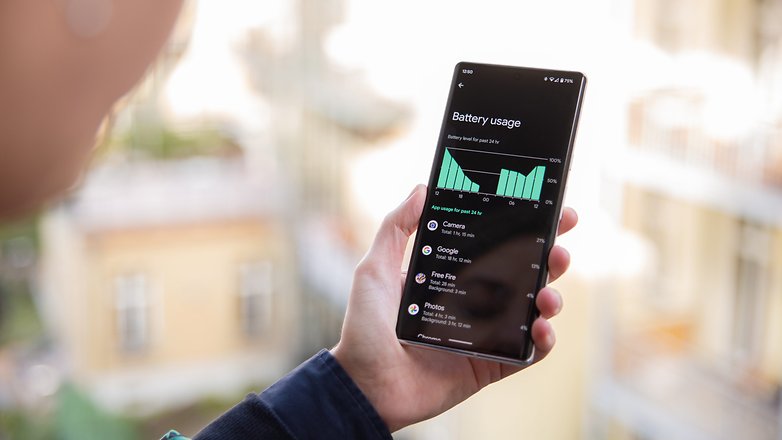
Regarding charging time, the performance of the Pixel 6 Pro is very close to what Apple and Samsung offer. That is, charging can last up to three hours depending on the charging mode set. By default, the Pixel 6 Pro is set to do adaptive charging, which is recommended for nighttime recharging, i.e. while you sleep.
However, even with adaptive charging mode disabled, charging 30% of the battery can take 1h15min. Which, according to my experience, can be consumed in two hours of camera use.
Google Pixel 6 Pro technical specifications
| Technical Data Sheet | |
|---|---|
| Product | |
| Photo |  |
| Screen | 6.7-inch LTPO OLED 1,440 x 3,120 pixels (512 PPP) at 120 hertz |
| SoC | Google Tensor 2x ARM Cortex-X1 @ 2.80 GHz 2x ARM Cortex-A76 @ 2.25 GHz 4x ARM Cortex-A55 @ 1.80 GHz 20x ARM Mali-G78 (GPU) |
| Memory (varies by region) |
12 GB LPDDR5-6400 128 GB, 256 GB or 512 GB UFS 3.1 |
| Micro SD | n/a |
| Main camera | 50 MP | f1.85 | 25 mm | 1.2 µm | 82° FoV | OIS (Samsung GN1 sensor: 1/1.31'') |
| Ultra Wide-angle | 12 MP | f/2.2 | 16.3 mm | 114° FoV |
| Telephoto lens | 48 MP | f/3.5 | 104 mm | 0.8 µm | 23.4° FoV | 4x optical zoom | OIS (Sony IMX586 sensor: 1/2'') |
| Video | 4K at 60 fps (rear) 4K at 30 fps (front) |
| Selfies | 11 MP | f/2.2 | 1.22 µm | 94° FoV |
| Audio | Stereo Speakers |
| Battery | 5,003 mAh |
| Wired Charging | Max. 30 watts |
| Wireless charging (Qi) | Max. 23 watts |
| UWB | Yes |
| IP Certification | IP68 |
| Pricing (worldwide) | From US$ 899/ € 899 |
Conclusio
The Pixel 6 Pro is the Google flagship we've been waiting for for years. The company has built its own SoC to carry forward the AI and ML development project that it considers the future of technology interaction. Compared to the previous models, the new generation is a game changer and had upgrades in many ways, especially the Pro model.
The Google Pixel 6 Pro is available in few countries and despite all the marketing investment from Google, the series should still be considered niche. The Pixel models of 2021 will hardly stand up to iPhones and Galaxies, because despite the excellent camera performance and hardware quality, they suffer Google's limited distribution capabilities.
In 2021 we can look forward to more people purchasing Pixel devices, as Google's pricing is more aggressive. The Pixel 6 Pro can be bought for $899, which for a flagship is very attractive.
Now, it remains to be seen if geek concepts like Artificial Intelligence, Computational Photography and Machine Learning can be translated to the general public. Right now, it seems hard to me, but that doesn't mean the Google Pixel 6 Pro isn't great!
Finally, answering the question from the beginning: are the 300 dollars more charged by Pixel 6 Pro justified? Personally, I don't think so. I'm a fan of the Pixel line and I've been using Google smartphones for more than three years, so what the camera software is able to deliver from computer photography is enough for me, I don't need a telephoto camera, despite finding it functional.
In addition, a 90 Hz screen is enough for me, because it is already a comfortable experience, and it would continue to be for the next two or three years. However, this is a question I leave you to answer. What is really important to you? If Pixel 6 Pro extras are relevant in your daily life, that's it, the 300 dollars are justified.
So, what did you think of Google's flagship for 2021? Would you consider getting the niche flagship by Google? Is the Google Pixel 6 intuitive enough for you?




Owh my Goooood!!!
here some problems that aren't covered by the exceptional article:
1. only 3 software updates (5 years of security updates is good, but google didn't mention the downside. nor the article).
2. no autofocus of any of the 4 cameras.
3. much inferior 5g chipset (I would say junky): it is the same as the galaxy s 20's, and iPhone 12.
4. both pixels are too weighty, otherwise the pixel 6 would be an excellent deal.
5. the new SoC - the tensor - is unknown yet. it's too early to say what it's worth.